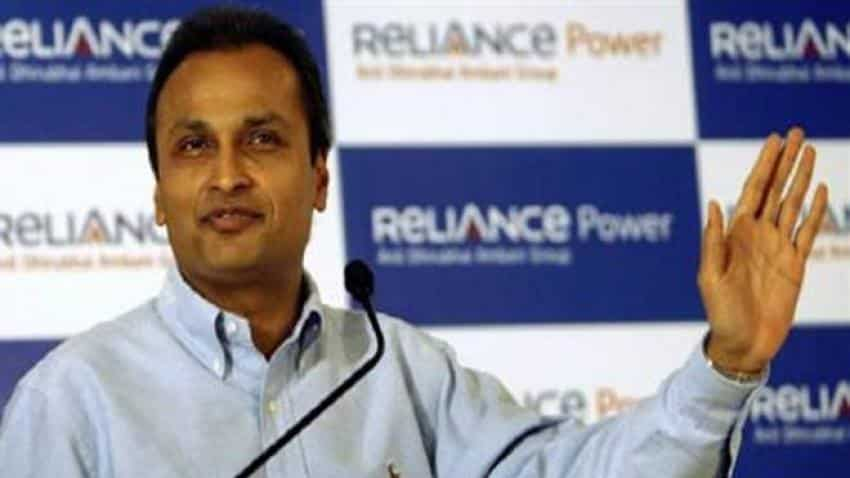10 years of Reliance Power listing: How Rs 10,000 turned Rs 1,600
The stock made its debut on the bourses on February 11, 2008, but never went above its issue price till today

Big names are no guarantee of big returns, nor the fundamental stock logic that infrastructure is always a safe bet.
A decade after a listing that made holes in many investors' pocket, it’s time to scrub old wounds, but for good, for revisiting the lessons the frenzy-filled infrastructure IPO – Reliance Power -- taught us all.
On the back of tremendous demand, the issue price for the Anil Ambani-owned Reliance Power IPO was fixed at the upper band of Rs 450 for non-retail, and Rs 430 for retail investors.
The issue was sold out within the first minute of its opening on January 15, 2008, a record for a mega offering of Rs 11,563 crore. The IPO had received a record over 50 lakh bids worth Rs 7.5 lakh crore, and the issue got subscribed by more than 72 times.
The stock made its debut on the bourses on February 11, 2008. It may have briefly rallied to Rs 599 on the listing day, but eventually settled the day at Rs 372, down 17% from the issue price. The company tried to soothe investors' nerves by offering bonus shares in 3:5 ratio, but only to make matters worse.
Ex-bonus, the issue price of Rs 430 for retail investors turned into Rs 269, and Rs 450 for non-retail was worth just Rs 289.
Never has the stock gone above its issue price until today. In November 2017, the stock made a fresh low of Rs 35. On Friday, the stock settled at Rs 44, a whopping 84% fall from the adjusted issue price of Rs 269 for retail investors.
That said, if you had invested Rs 10,000 in Reliance Power IPO, and held it to this day, you would have left with just Rs 1,636.
While many stocks might have fallen from grace on Dalal Street, but what sets Reliance Power apart is the strong optimism that surrounded the IPO at the time of its launch. From autowallahs, rickshawallahs, to HNIs and foreign investors, people came in droves to invest in the IPO. Record demat accounts were opened during that period. A few sold out their entire portfolio, while some borrowed money to buy units in the IPO, but all in vain!
Safe to say those who did not receive any share despite bidding were the real winners of the RPower listing, otherwise only a handful managed to exit their positions at a decent profit.
Hard to say if the bear carnage followed by the subprime crisis in the US or the company’s own fundamentals, or both, caused the steep fall, but the fact that the stock never turned profitable in all these years tells you how collective wisdom can often be grossly wrong.
Zee Business spoke to Basant Maheshwari of Basant Maheshwari Wealth Advisors and Deepak Jasani of HDFC Securities to list out the cardinal rules of IPO investing that one should always follow:
1) No substitute to quality
Maheshwari believes it was not about the IPO coming at a bad time, but people’s approach towards buying a company without judging its fundamentals or the business model it is in.
“People can buy best companies in the worst of time and the worst companies in the best of time,” he said.
Jasani also said that Business is more important than the brand name.
2) Avoid herd mentality
Avoid herd mentality and beware of the fact that bull markets (as do bear markets) do not last forever.
3) Tread, or rather trade with caution in over-regulated sectors
Beware of mega expansion plans leading to ambitious capacity in sunrise sectors where the investors are still grappling with demand-supply dynamics and valuation parameters. Giving high valuations to sectors prone to govt-regulation can be tricky.
4) Don’t catch a falling knife
Trying to average or catching a falling knife can be dangerous, as is evident in the case of RPower.
5) Don’t follow big guys blindly
Blindly following institutions can be risky for retail and HNI investors as their return expectations, return periods, measurement parameters and risk-bearing capacity can be vastly different.
12:01 AM IST






 Share Market Closing Bell: Sensex, Nifty dip on weak FIIs; Yes Bank, DHFL, Reliance Capital stocks bleed
Share Market Closing Bell: Sensex, Nifty dip on weak FIIs; Yes Bank, DHFL, Reliance Capital stocks bleed Sensex, Nifty bounce back after early morning losses; Tata Steel, Apollo Tyres, Hero MotoCorp stocks gain
Sensex, Nifty bounce back after early morning losses; Tata Steel, Apollo Tyres, Hero MotoCorp stocks gain Sensex retains above 39K, Bank Nifty sustains above 30K levels; Kellton Tech Solutions, Aptech stocks bleed
Sensex retains above 39K, Bank Nifty sustains above 30K levels; Kellton Tech Solutions, Aptech stocks bleed Reliance Power shares plunge nearly 24 pc post Q4 results; other group stocks tumble too
Reliance Power shares plunge nearly 24 pc post Q4 results; other group stocks tumble too Q4FY19 results: Reliance Power posts Rs 3,558 cr net loss
Q4FY19 results: Reliance Power posts Rs 3,558 cr net loss